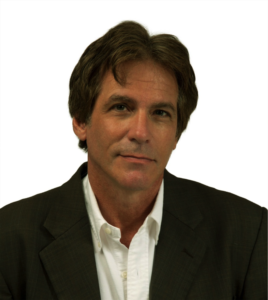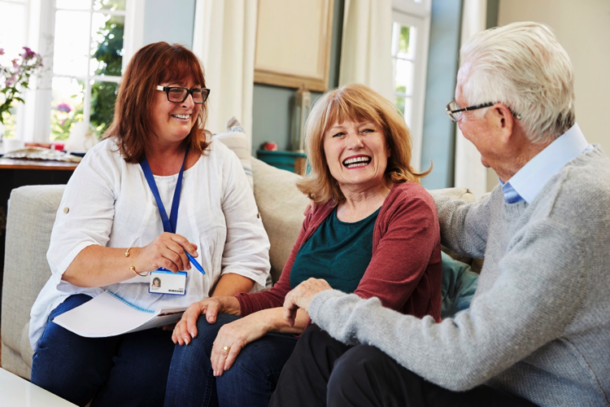 In the summer of 1994, Gary Barg was a video producer living in Atlanta and preparing for an assignment to cover the Olympic Games. With a few weeks on his hands before his assignment kicked into high gear, Barg traveled to south Florida to support his mother who was caring for her parents. For those two weeks, Barg stepped into his mother’s role as family caregiver. He witnessed the medical challenges and constant questions that often can’t be answered. He watched his mom undergo physical and mental exhaustion as she was serving as a caregiver. And, he saw firsthand that his grandfather’s care was becoming more and more challenging, making it difficult to meet his needs.
In the summer of 1994, Gary Barg was a video producer living in Atlanta and preparing for an assignment to cover the Olympic Games. With a few weeks on his hands before his assignment kicked into high gear, Barg traveled to south Florida to support his mother who was caring for her parents. For those two weeks, Barg stepped into his mother’s role as family caregiver. He witnessed the medical challenges and constant questions that often can’t be answered. He watched his mom undergo physical and mental exhaustion as she was serving as a caregiver. And, he saw firsthand that his grandfather’s care was becoming more and more challenging, making it difficult to meet his needs.
For Barg, that two-week period was transformative. Not only did it give him the opportunity to see firsthand the all-consuming nature of caregiving, but it also set him on a career path that endures today. As the editor-in-chief of Today’s Caregiver magazine, founded in 1995 as the first national magazine dedicated to family and professional caregivers, Barg utilizes his magazine, Caregiving.com, and the Fearless Caregiver conferences as platforms to provide support and guidance through the shared experience of caregiving.
Barg likens the family caregiver to a CEO. In applying a business term to describe a family caregiver, the complexity of his or her role instantly becomes obvious. CEOs of large companies don’t do all the work themselves. Rather, they surround themselves with competent employees who carry the organization forward, helping it run smoothly and prosper. Likewise, a family caregiver needs competent help at home, not only in the day-to-day care of a loved one, but managing the household, dealing with insurance, and a myriad of other responsibilities. For a family caregiver to do his or her best, respite is also a necessity, which is where professional home care comes in, lending a hand so that the family member can take a break to recharge.
While some family caregivers struggle with feelings of inadequacy and guilt for abdicating their role when asking for professional in-home help, Barg sees it differently. In his view, this team of family and professional caregivers comprises two halves that become a whole, working together in order to meet the needs of the loved one, while helping him or her to remain at home.
Barg knows firsthand how challenging it can be for senior loved ones to accept help, and he also knows that families throughout the world have similar conversations trying to convince their loved ones about the benefits of an in-home caregiver. The goal during the Fearless Caregiver conferences is to provide opportunities for caregivers to share these universal experiences in order to find solutions. According to Barg, if someone is having difficulty in a caregiving situation, there is likely someone else who has found a solution to a piece of that same puzzle.
Thinking creatively and empathetically about your loved one’s situation may make a real difference in his or her level of acceptance when it comes to hiring a professional caregiver. Barg relays the story of a caregiver at one of the Fearless Caregiver conferences:
For a long time, a woman had tried to convince her mother that hiring an in-home caregiver would be beneficial for them both. Her mother was resistant, though. One day, the daughter thought to explain the situation using terms her mother could recall from her career as a bank president, telling her mother that they needed to hire an administrative assistant because they were both very busy, and there was a lot of paperwork to get done. The woman’s mother approved, and an in-home caregiver was hired. In speaking with her mother after the first day the caregiver had been to the house, the “administrative assistant” received a glowing review. Her mother also wondered aloud if the next time the caregiver was at the house, they could go get ice cream.
Barg marvels at the simplicity and creativity that caregivers utilize in order to ease the transition and allay fears, all the while helping to accomplish the desired goal of allowing a loved one to age in place.
To learn more about ways in which family caregivers can be supported in their roles, listen to the full interview with Gary Barg in the Help Choose Home podcast series by searching for “Help Choose Home” on iTunes, Google, or on any device at https://player.fm/series/help-choose-home.
The Help Choose Home podcast series is a joint effort between the National Association for Home Care and Hospice (NAHC), Axxess, and corecubed. The vision is to provide information and resources to help those with a care need learn more about healthcare at home. Podcasts are hosted by Merrily Orsini, president and CEO of corecubed, a firm dedicated exclusively to senior care marketing.
Join us in the quest to educate your community to Help Choose Home! Share this podcast with others on your social media and follow us on LinkedIn and Facebook.

